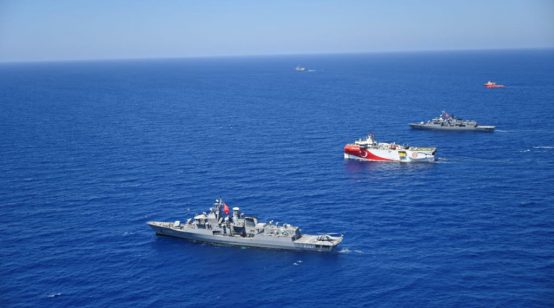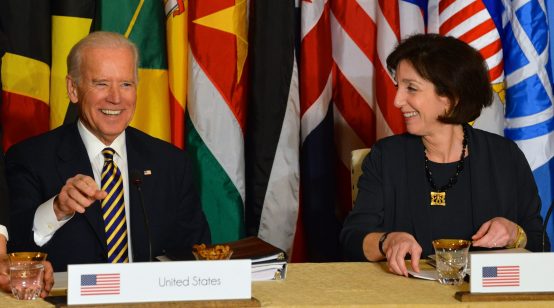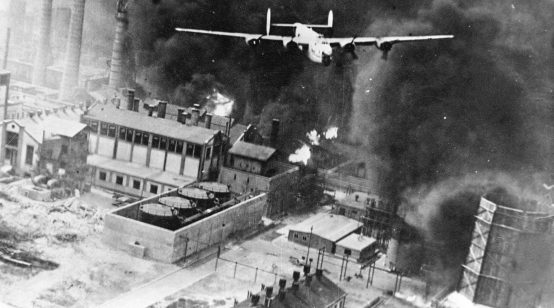
Russian missiles and U.S. fighter jets have dominated the news in Turkey in recent weeks as Ankara is set to receive the S-400 anti-aircraft missile system from Russia, rankling its NATO allies and prompting the United States to suspend delivery of F-35 fighter jets to Turkey. Ignored amidst this kerfuffle, however, has been Turkey’s quite favorable shift towards Washington on gas.
For decades, Turkey has relied on pipeline gas from its neighbors—Azerbaijan, Iran and Russia—to meet its needs. In 2016, pipeline gas accounted for 84% of Ankara’s total imports, 63% of which came from Russia. Turkey’s imports of liquefied natural gas (LNG) have steadily grown since 2016 – but only to meet demand growth, and never at the expense of pipeline gas. Since late 2018, however, Turkey’s LNG imports have surged, hitting a monthly record of 2.34 billion cubic meters (bcm) in January 2019. Most interestingly, LNG is replacing pipeline gas imports, which started declining last year.
Gas has entered a global buyer’s market and a golden age in Europe thanks to an ongoing supply glut. Suppliers are scrambling to protect and win market share, allowing importers to leverage market dynamics in order to negotiate advantageous supply contracts. Only logical that Ankara wants its piece of the pie at a time when it seeks to increase its geopolitical cloud. Taking on more LNG brings a host of attendant commercial benefits and greater flexibility. And it sends a positive signal about its willingness to partner with both Russia and the United States, playing both to hit the best possible outcome.
Partnering with both sides
Perhaps no country straddles the rivalry between Moscow and Washington more than Turkey. For while the row over military hardware is delicate, the gas industry provides Turkey with an economic win-win in which Moscow and Washington must compete on a commercial basis.
Russia is the world’s leading supplier of pipeline gas and has been Turkey’s dominant supplier since the 1980s. Until 2005, this gas arrived from a pipeline that transited Ukraine. Thereafter, the Blue Stream pipeline brought it directly across the Black Sea. And once Turk Stream comes online later this year, Russia’s import position will only be fortified.
Yet Turkey is now doing what China has done masterfully for years: leveraging a buyer’s market to get better deals. Dependent on imports for 99% of its demand, Turkey never imported a significant amount of LNG. Russian pipeline gas, moreover, was cheaper.
Turkey could have easily continued with this strategy, but instead has embraced LNG, considered by some experts as “perhaps the fastest growing energy market of them all.”
The move has profoundly altered its energy landscape. It now receives imports from the United States, Qatar and other countries, alongside its pre-existing contracts with Algeria and Nigeria. And Ankara is even turning to Russia, which got into the game in 2017. This rich variety of suppliers not only nurtures positive commercial outcomes, but can even smooth strategic disagreements.
Dollars and sense
The competition between LNG and pipeline gas will, above all, help Turkey reduce its energy bill. In 2018, Turkey spent $42.99 billion on energy imports. Given the country’s significant current account deficit, reducing expenditures on energy imports—and, therefore, the outlay of foreign currency—is a high priority.
To be sure, the decline in pipeline gas is partly due to softening demand in the country. In 2018, Turkey’s natural gas consumption fell by 8%. LNG prices are also currently lower than those of Russian pipeline gas, and are forecast to remain so until at least fall 2019. Russia is clearly feeling the pressure, shown by the fact that Putin is routinely accepting Ankara’s demands for gas price discounts of 10% and more.
The wave of gas entering the global market, moreover, does not appear likely to crest anytime soon. In March, Asian LNG prices fell to a three-year record low, approaching the $4/mmBtu level. Gas prices are so low in Texas that some sellers are paying buyers to take it. It’s hard to foresee, at least at the moment, a spike in LNG prices coming.
But Turkey’s shift towards LNG is more than a short-term price play. LNG offers sundry strategic and commercial advantages. Without destination clauses, Turkey can use LNG however it chooses, including re-exporting it to the Balkan states. Spot market purchases and short-term contracts also permit more flexibility to manage intake to its liking. Meanwhile, emerging technologies can use LNG as a transport fuel. Turkey already moves LNG by truck to factories and other users in hard-to-reach areas. The seriousness with which Turkey is committing to LNG was underlined by its launch, in September 2018, of an internal trading market for gas. In other words, Turkey has been preparing for this shift for some time.
Qatari horizon
Turkey’s shift towards LNG, at the expense of pipeline gas, is smart, subtle and serious. For now, it brings cost savings and increased flexibility to meet demand and harness new LNG-fueled technologies and economies. In the long run, it will make Turkey more energy independent.
Major hurdles remain. Turkey needs more investment in infrastructure to import, re-export, store, and transport gas. State-owned BOTAS, moreover, needs to further unwind its dominant position to encourage a more liberal trading environment.
The seriousness of Turkey’s shift may not become evident until the end of 2021, when 30% of its pipeline contracts come up for renewal. Turkey’s position will be stronger then, especially as Qatar’s new production trains come online at the end of 2023.
Energy is not a zero-sum game. It builds bridges between countries, something Turkey is doing with suppliers of LNG and pipeline gas alike. In the process, it’s signaling its desire to work with both the United States and Russia. During times of trouble, it’s never wise to paint a country with only one brush.





